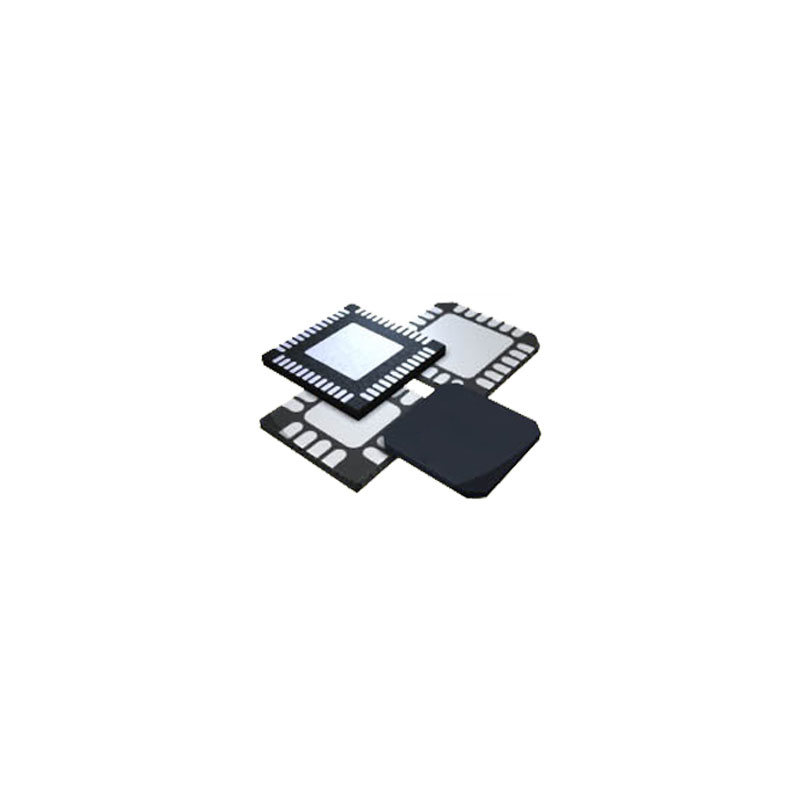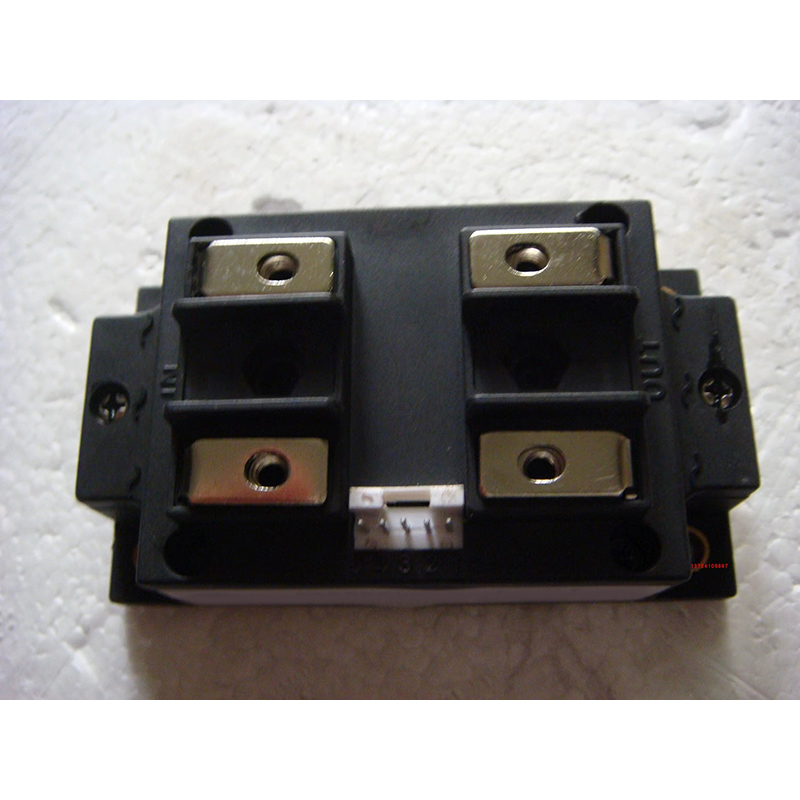HT12E and HT12D: Price, Working and Datasheet
 Published: May 24, 2023
Published: May 24, 2023
Contents
The HT12E and HT12D are popular encoder and decoder ICs, respectively, commonly used in wireless communication and remote control applications. These integrated circuits offer a straightforward and efficient way to encode and decode digital signals, enabling wireless transmission and reception of data.
The HT12E and HT12D provide a cost-effective and reliable solution for various applications, including remote control systems, security systems, and home automation. In this article, we will delve into the features, working principles, and applications of the HT12E and HT12D ICs, providing a comprehensive overview of their capabilities and benefits.
HT12E and HT12D: Overview, Properties, Application
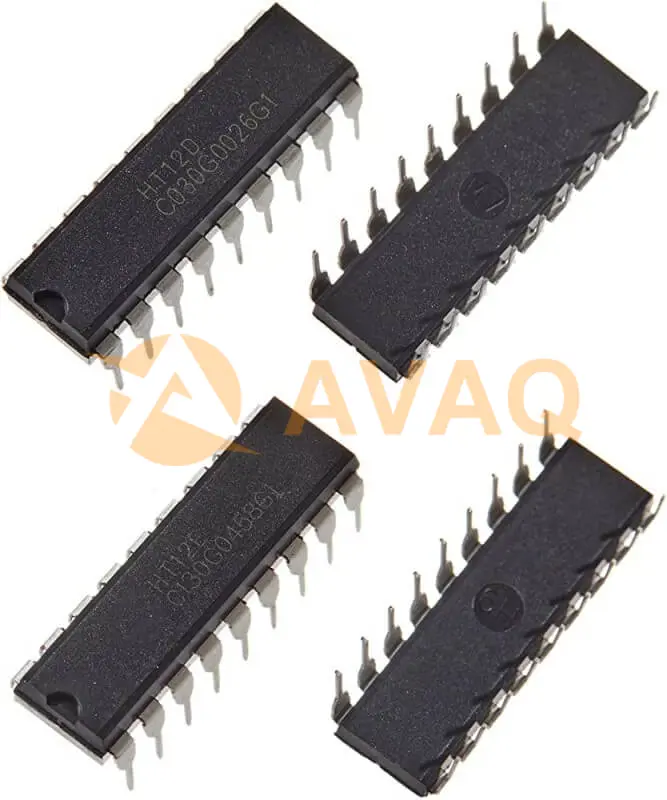
#1 Overview
The HT12E is an encoder integrated circuit (IC) that is commonly used in remote control systems and wireless communications. It is one of the products manufactured by Holtek Semiconductor.
The HT12D is a decoder integrated circuit (IC) that is typically paired with the HT12E encoder IC for use in remote control systems and wireless communication applications.The HT12D decoder decodes the received coded input and extracts the original address code and data code information.
The address code and data code of the HT12E can be set via an external DIP switch. The encoded data can be sent out via a transmission device (e.g. wireless transmitter). The receiver side can use the HT12D decoder to decode the received signal and restore the original address code and data code.
The HT12E and HT12D are usually used together to form a complete codec system for wireless remote control and data transmission applications. They are widely used in home appliances, automotive electronics, security systems and industrial control.
#2 Properties
|
Attributes |
HT12E |
HT12D |
|
Function |
Encoder |
Decoder |
|
Input Ports |
Address Code (A0-A3), Data Code (D0-D7) |
Address Code (A0-A3) |
|
Output Ports |
Coded Output |
Data Code Output (D0-D7) |
|
Encoding |
Combines address and data inputs to generate coded output |
N/A (Decodes received coded input) |
|
Transmitter/Receiver |
Transmitter |
Receiver |
|
Compatibility |
Encoding scheme compatible with HT12D decoding scheme |
Decoding scheme compatible with HT12E encoding scheme |
|
Application |
Remote control, wireless communication, industrial control |
Remote control, wireless communication, industrial control |
#3 Applications
HT12E:
The HT12E serves as an encoder IC that serves to encode the input address and data codes into a digital signal stream for use in applications such as remote control systems, wireless communications and data transmission:
- Encoder: The HT12E combines the input 4-bit address code and 8-bit data code and encodes them into a 4-bit digital signal stream. This encoded signal can be sent to the receiver via a wireless transmitter or other transmission medium.
- Remote Control Systems: The HT12E is often used in remote control systems to encode the address code and command data code of a key press and send it to the receiver. For example, when you press a button on the remote control, the HT12E will send the corresponding address code and command code to the receiver, thus realizing the remote control operation of the device.
- Wireless communication: The HT12E can be used to encode data and then transmit it via wireless signals. It can encode sensor data, control commands or other types of data into a digital signal stream and send it to the receiver via wireless communication to realize remote data transmission.
HT12D:
The HT12D has a wide range of applications in remote control systems and wireless communication applications, mainly for receiving and decoding encoded data. The following are some common applications for the HT12D:
- Remote Control Systems: The HT12D can be paired with the HT12E encoder for use in remote control systems. It is capable of receiving coded data from the remote control transmitter and decoding it into address and data codes to enable control operations of the remote control system.
- Wireless data communication: It can be used to receive and decode encoded data from wireless transmission for wireless data communication system. It can receive coded data from wireless transmission media and extract the original address code and data code information to obtain the transmitted data and commands.
- Security system: It can be used in security system, such as access control system, burglar alarm system, etc. It can receive coded data sent from security sensors or remote controls and decode them into corresponding command or status information to realize the control and monitoring functions of security systems.
- Industrial control: It can be used in industrial automation and control systems for receiving and decoding control signals. It can receive coded data sent from controllers or other devices and decode it into control commands or data to enable control and monitoring of industrial processes.
- Smart home system: It can be used in smart home system, such as remote control of home appliances, lights, curtains, etc. It can receive coded data from smart home controllers or cell phone applications and decode them into corresponding control commands to realize remote control of smart home devices.
- Learning and Experiment: It is commonly used in learning circuits and experimental projects. It can be used as a decoder component to help learners understand and practice wireless communication and control principles.
HT12E and HT12D: What are differences
HT12E and HT12D are a pair of encoder and decoder ICs commonly used together in remote control and wireless communication applications. Here are the key differences between HT12E and HT12D:
Function: HT12E is an encoder IC, while HT12D is a decoder IC. HT12E encodes the input address and data into a coded output, while HT12D decodes the received coded input and retrieves the original address and data.
Input/Output Configuration: HT12E has address code input pins (A0-A3) and data code input pins (D0-D7), while HT12D has address code input pins (A0-A3) and data code output pins (D0-D7). HT12E encodes and transmits the data, while HT12D receives and decodes the data.
Address and Data Processing: HT12E combines the address and data inputs to generate a coded output, while HT12D separates the received coded input into address and data outputs.
Transmitter and Receiver: HT12E is typically used in the transmitter or encoding side of the communication system, while HT12D is used in the receiver or decoding side.
Encoding and Decoding Scheme: HT12E and HT12D use a specific encoding and decoding scheme that allows them to work together as a matched pair. The encoding scheme in HT12E is compatible with the decoding scheme in HT12D, ensuring proper communication between the two ICs.
Application: HT12E and HT12D are commonly used in remote control systems, wireless communication systems, security systems, and various industrial control applications that require wireless data transmission and control.
It's important to note that HT12E and HT12D are designed to be used together as a pair for proper encoding and decoding functionality. They have complementary features and are optimized for seamless communication between the transmitter and receiver in a wireless system.
HT12E and HT12D: Circuit Diagram
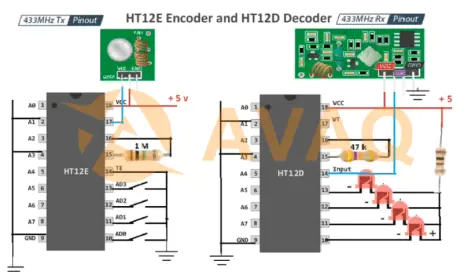
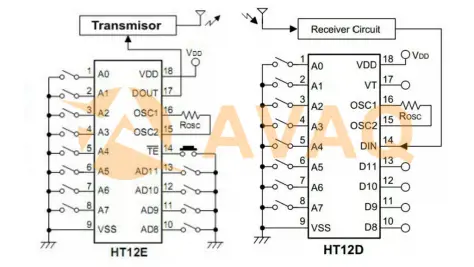
HT12E and HT12D: Price
The prices of electronic components, including HT12E and HT12D, can vary depending on factors such as the supplier, quantity ordered, location, and availability. It is best to check with electronic component distributors like AVAQ Semiconductors, retailers, or online marketplaces like amazon and ebay to get the most up-to-date and accurate pricing information for HT12E and HT12D ICs.
HT12E and HT12D: Datasheet PDF
Free Download: HT12E and HT12D here >>
Conclusion
In conclusion, the HT12E and HT12D ICs are versatile and practical components that enable efficient encoding and decoding of digital signals in wireless communication systems. With their ease of use, low cost, and wide range of applications, these ICs have become popular choices for remote control, security, and home automation systems.
The HT12E and HT12D offer a reliable and convenient solution for wireless data transmission and reception, making them valuable tools for engineers and hobbyists alike. As technology continues to advance, the HT12E and HT12D ICs are likely to evolve further, incorporating new features and capabilities to meet the growing demands of wireless communication and remote control applications.
 FAQ
FAQ
- What is the operating voltage range of HT12E and HT12D?
- It typically operate within a voltage range of 2.4V to 12V. The exact operating voltage specifications may vary depending on the specific model or variant of the IC.
- Where can I find more information about HT12E and HT12D?
- You can find more detailed information in their respective datasheets, which are available on the Holtek Semiconductor website or through online electronic component distributors, you can FREE download datasheet directly from this article.
- How do HT12E and HT12D communicate with each other?
- HT12E and HT12D communicate through a wireless link using amplitude-shift keying (ASK) modulation. The HT12E encoder converts the parallel data into a serial stream, which is transmitted wirelessly. The HT12D decoder receives and decodes the serial data, reconstructing the original parallel data for further processing.
- What are HT12E and HT12D?
- HT12E and HT12D are encoder and decoder ICs, respectively, developed by Holtek Semiconductor. They are commonly used together to enable wireless communication between a transmitter and receiver in various remote control applications.
HT12E In Stock: 7938
 Popular Industry Focus
Popular Industry Focus
Related Parts
-
![ES3890F]()
ES3890F
ESS TECHNOLOGY INC
Micro Peripheral IC
-
![SDA9361]()
SDA9361
INFINEON TECHNOLOGIES AG
Horiz/Vert Deflection IC, MOS, PQFP44, PLASTIC, MQFP-44
-
![HMC6352]()
HMC6352
HONEYWELL MICROELECTRONICS AND PRECISION SENSORS
Analog Circuit, 1 Func, 6.50 X 6.50 MM,1.50 MM HEIGHT, ROHS COMPLIANT, LCC-24
-
![AIC-7890AB]()
AIC-7890AB
STMicroelectronics
French Electronic Distributor since 1988
-
![BU-63152G3-902]()
BU-63152G3-902
DATA DEVICE CORP
MIL-STD-1553 Data Bus Transceiver, PQFP64, 14 X 14 MM, 2 MM HEIGHT, PLASTIC, QFP-64
-
![W83627EHG]()
W83627EHG
Nuvoton Technology Corporation
I/O Controller LPC Controller 128-Pin PQFP
-
![TW8816-DALB3-GR]()
TW8816-DALB3-GR
TECHWELL
Video Processor IC GPIO, I²C, SPI, Serial NTSC, PAL, SECAM 128-LQFP (14x20) Package
-
![CX20493-21]()
CX20493-21
CONEXANT SYSTEMS
Modem-Support Circuit, 2.4kbps Data, CMOS, QFN-28
-
![MR82C59A/B]()
MR82C59A/B
Renesas Technology Corp
Controller Interface 28-CLCC (11.46x11.46)
-
![CC1150RSTR]()
CC1150RSTR
Texas Instruments
RF Transmitter UHF TRANSMITTER TAPE AND REEL
-
![ANNA-B402-00B]()
ANNA-B402-00B
u-blox
Bluetooth Modules - 802.15.1 nRF52833, SIP, chip antenna,antenna pin, open CPU
-
![XBP24CZ7UIT-004]()
XBP24CZ7UIT-004
Digi
802.15.4 Zigbee® Transceiver Module 2.4GHz Antenna Not Included, U.FL Through Hole
-
![NINA-B301-00B]()
NINA-B301-00B
u-blox
Bluetooth Modules - 802.15.1 nRF52840, antenna pin, open CPU
-
![BT840XE]()
BT840XE
Fanstel Corp.
802.15.4, Bluetooth Bluetooth v5.0, Thread, Zigbee® Transceiver Module 2.4GHz Antenna Not Included, U.FL Surface Mount
-
![SARA-R410M-73B]()
SARA-R410M-73B
u-blox
Cellular Modules LTE/Cat M1 NB1 module Cat M1 Korea regional variant LGA, 16x26 mm, 250 pcs/reel

 Update Time: May 26, 2023 Consumer Electronics
Update Time: May 26, 2023 Consumer Electronics![[2023] What are Symptoms of a Bad Battery Current Sensor](/files/uploads/technology/b/20230519164016gm-battery-current-sensor.webp)
![[Solved] How to Bypass Battery Current Sensor 2023](/files/uploads/technology/b/20230517162418battery-current-sensor.webp)










